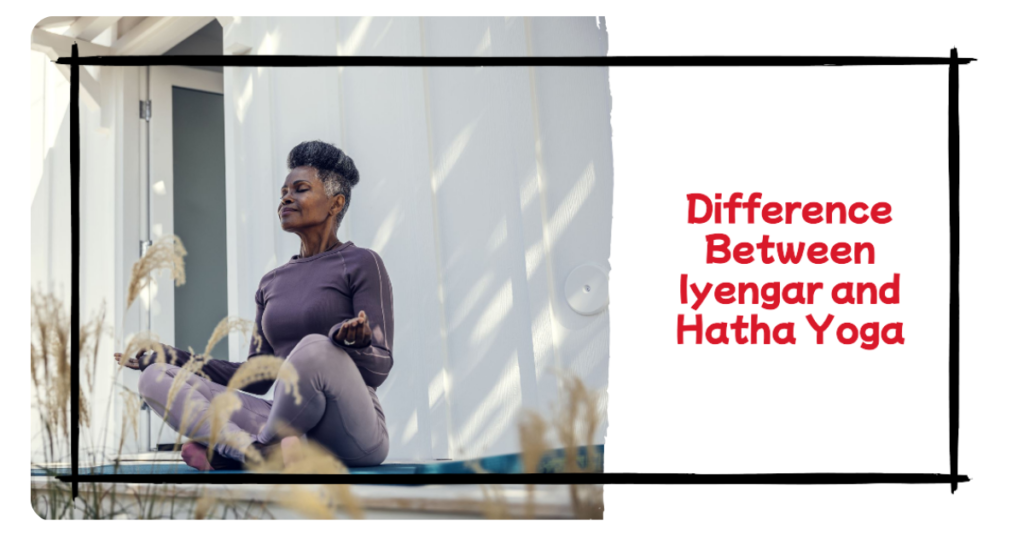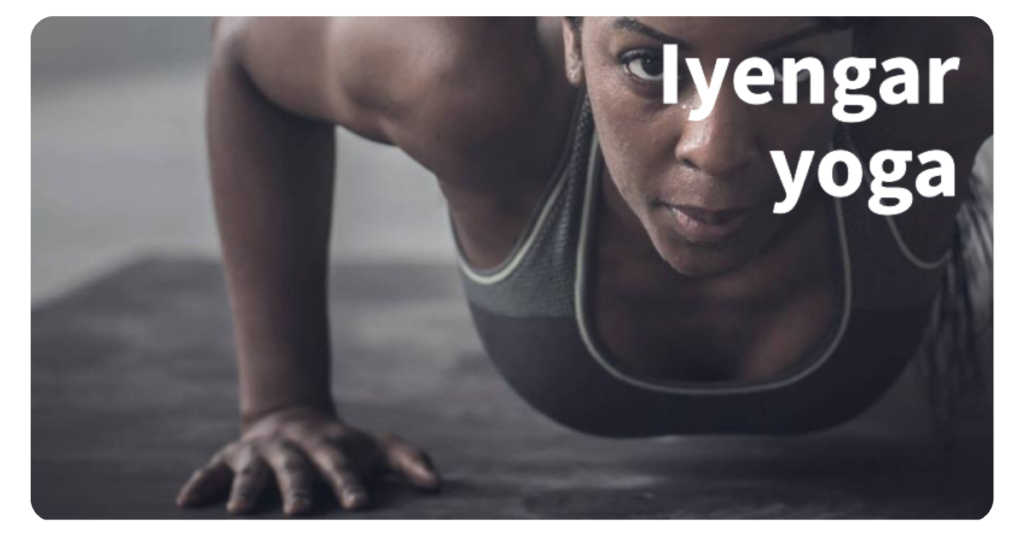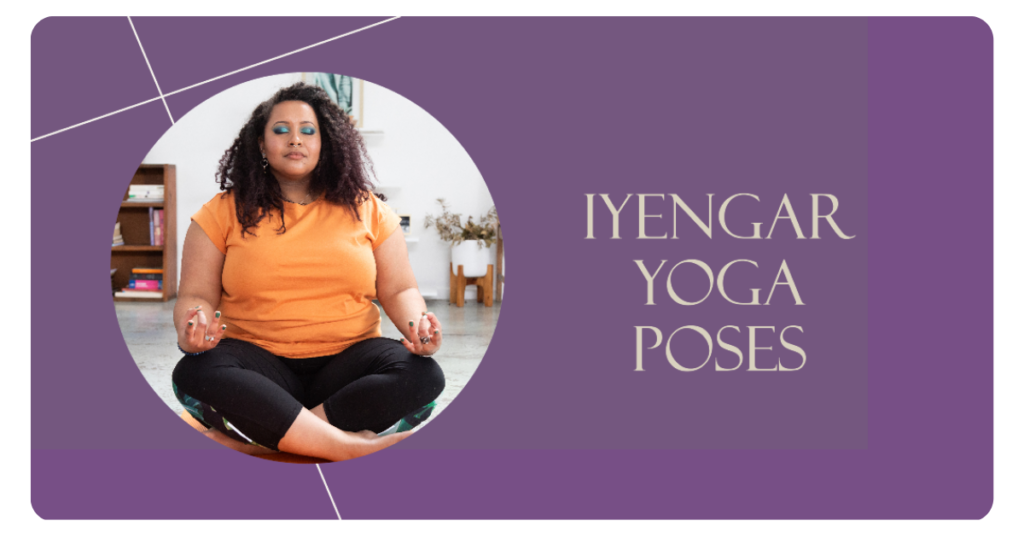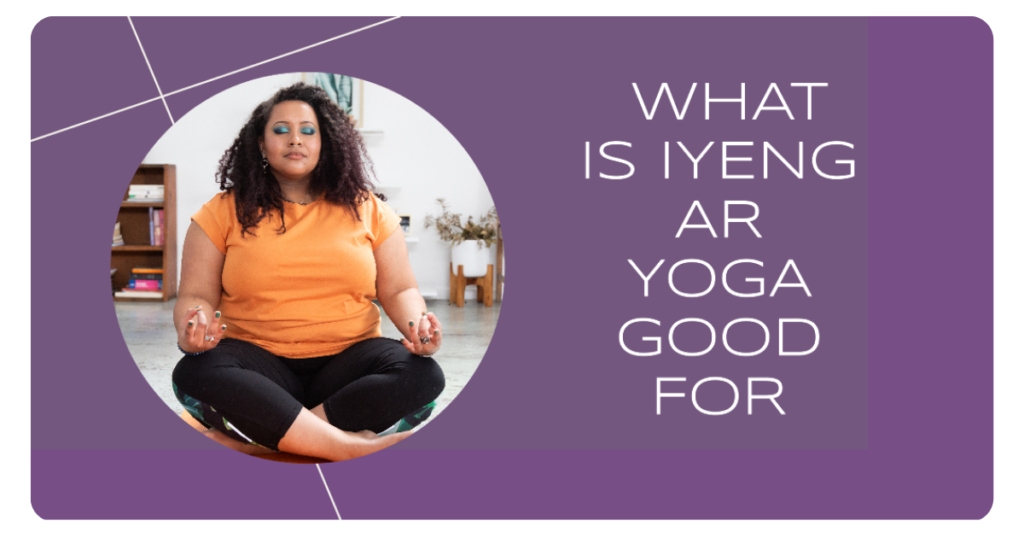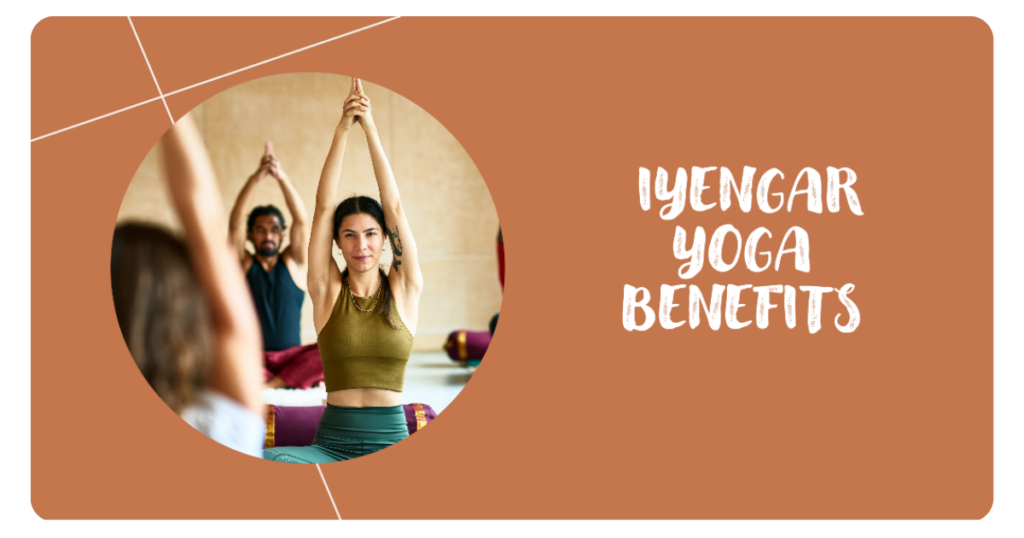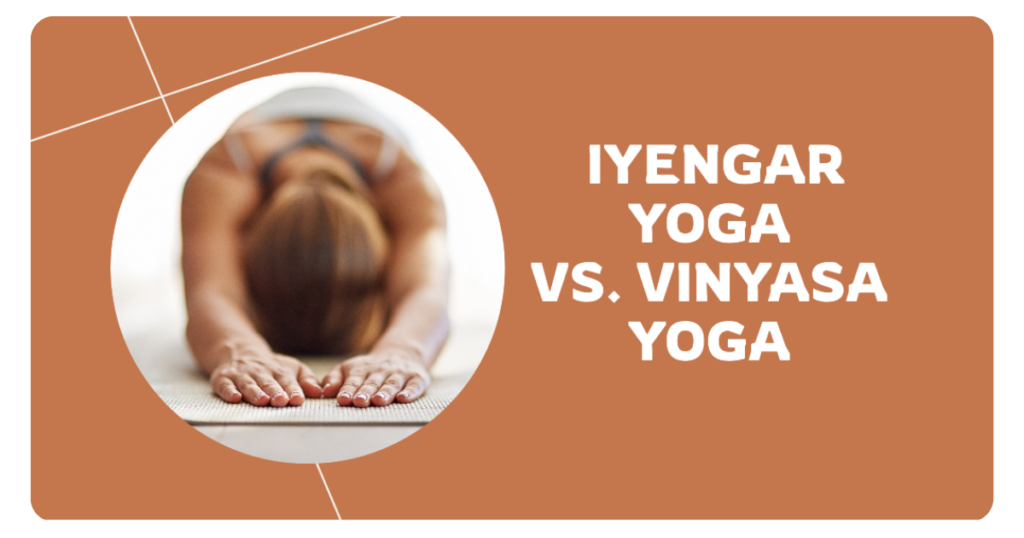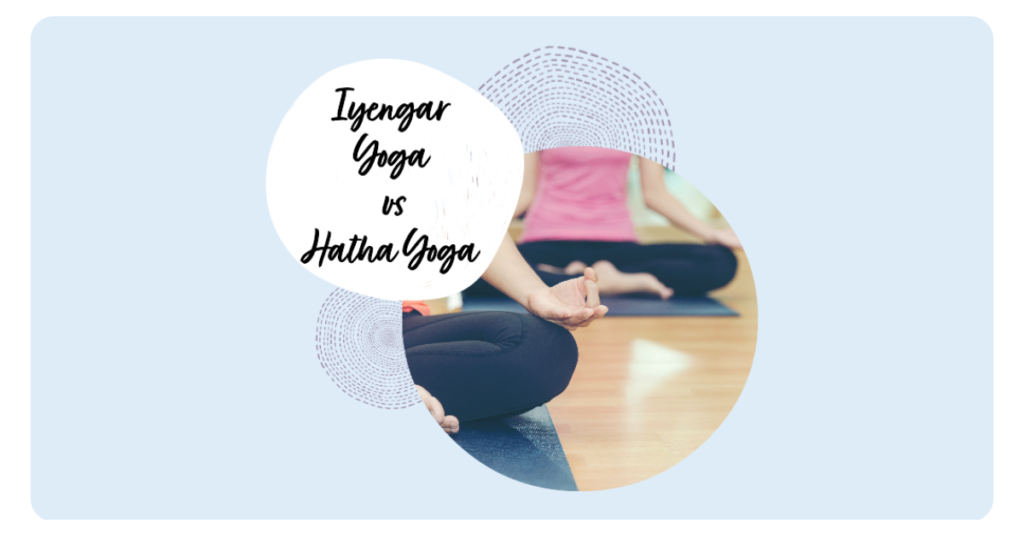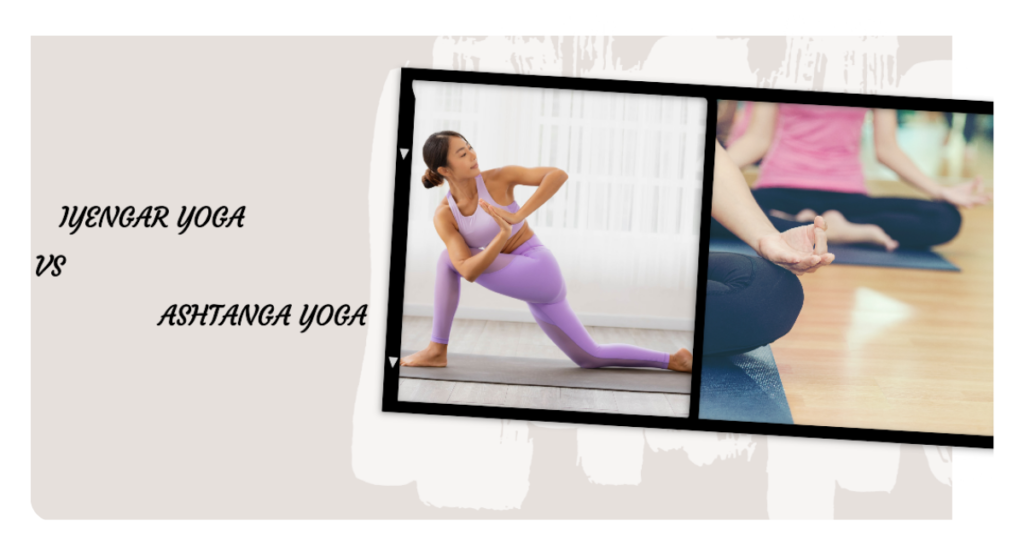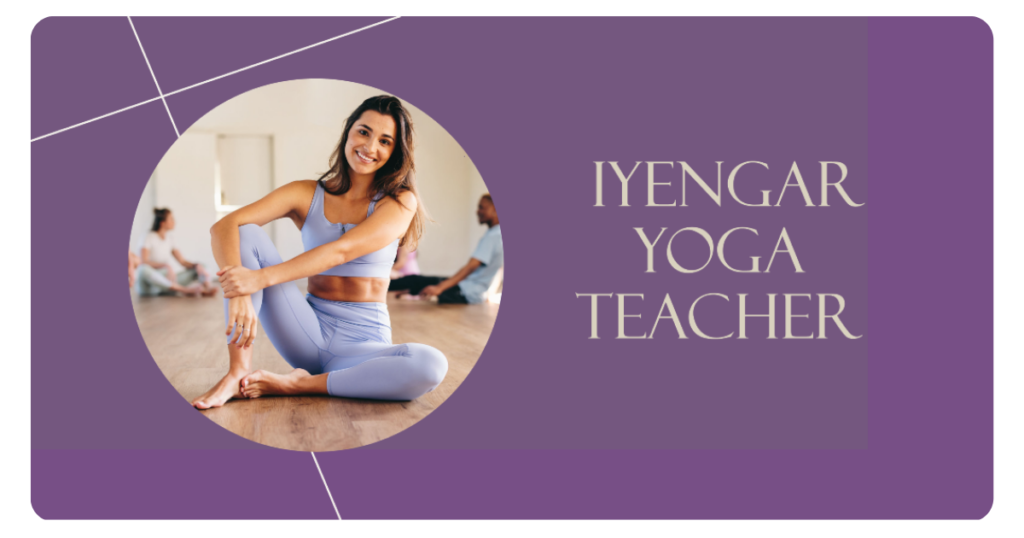
Iyengar yoga is a form of Hatha yoga known for its focus on precision, alignment, and the use of props to help students achieve correct posture. Founded by B.K.S. Iyengar, this style emphasizes detailed instructions and anatomical understanding to develop strength, mobility, and stability. If you’ve been practicing Iyengar yoga and feel called to share these transformative teachings, becoming a certified Iyengar yoga teacher could be a rewarding path. “How to Become an Iyengar Yoga Teacher”
Earning an Iyengar yoga teaching credential is a significant undertaking that requires years of devoted study, practice, and adherence to the tradition’s rigorous standards. However, the journey allows you to deepen your personal practice, develop expertise in yoga philosophy and anatomy, and eventually guide others on their yoga journeys.
This comprehensive guide will outline the step-by-step process of how to become an Iyengar yoga teacher, from building a solid foundation to completing advanced levels of training and certification. We’ll cover the prerequisites, curriculum, time commitments, costs, and tips for success along this transformative path.
Prerequisites for Iyengar Yoga Teacher Training
Before embarking on Iyengar yoga teacher training, certain prerequisites must be met to ensure you have a strong foundation. These include:
- Consistent Personal Practice: A minimum of 3-5 years of regular Iyengar yoga practice is generally recommended, attending classes 2-4 times per week. This allows you to develop proficiency in asanas (postures), understand alignment principles, and experience the depth of Iyengar yoga.
“By constant practice, the mind becomes unwavering, with the gates of the senses closed, and the mind becomes absorbed.” – The Yoga Sutras of Patanjali
Consistent practice is key, as it takes time to embody the teachings, build stamina, and cultivate the focus required to become an effective Iyengar teacher. - Understanding of Yoga Philosophy: Iyengar yoga is grounded in the ancient teachings of yoga, so prospective teachers must have a working knowledge of the Yoga Sutras, Bhagavad Gita, and other philosophical texts.
A strong grasp of yoga philosophy allows teachers to communicate the deeper dimensions of the practice and provide context for the physical postures. Some philosophical concepts that will be covered:- The Eight Limbs of Yoga (Ashtanga)
- The Laws of Karma
- The Qualities of a Balanced Mind (Sattva, Rajas, Tamas)
- Non-attachment (Aparigraha)
- Physical Ability: You must be able to demonstrate asanas with proper alignment and use of props. Good overall health is essential, as teacher training can be physically demanding.
During training, you’ll practice advanced asanas, maintain poses for extended periods, and learn how to effectively adjust students – so physical capability and stamina are musts. - Dedication and Discipline: Becoming an Iyengar teacher requires tremendous commitment, passion for the practice, and willingness to adhere to the method’s high standards.
The path is not for the faint of heart. As Mr. Iyengar himself said, “The poor do not have the means, the lazy do not have the perseverance.”
By fulfilling these prerequisites, you lay the groundwork for undertaking formal Iyengar yoga teacher training with the necessary preparation.
Step 1 – Begin Your Iyengar Yoga Study
The first step towards becoming an Iyengar yoga teacher is to immerse yourself fully in the study and practice of this discipline. Here’s how to start:
- Find a Certified Iyengar Yoga Teacher or Studio Near You: Working with an experienced, certified Iyengar instructor is crucial. Use the Iyengar Yoga National Association of the United States directory to locate approved teachers in your area.
Look for teachers with senior-level Iyengar certifications, who have studied extensively with the Iyengar family or top practitioners. Observe their classes and choose an instructor you resonate with. - Develop a Consistent Iyengar Yoga Practice: Attend Iyengar yoga classes regularly, aiming for a minimum of 2-4 sessions per week. This will help you internalize the principles and experience the transformative effects firsthand.
In Iyengar yoga, consistency is crucial. Mr. Iyengar himself said, “Yoga is 99% practice and 1% theory.” Through dedicated practice, you’ll cultivate presence, patience, and penetration into each asana. - Read Recommended Books on Iyengar Yoga: Deepen your understanding by studying B.K.S. Iyengar’s classic texts like “Light on Yoga,” as well as books by his children and other renowned Iyengar teachers. A few recommended reads:
- “Light on Yoga” by B.K.S. Iyengar – Considered one of the greatest yoga classics, this book details instructions for over 200 asanas with illustrations.
- “Light on Life” by B.K.S. Iyengar – Wisdom and philosophical insights from the founder himself.
- “Yoga Anatomy” by Leslie Kaminoff and Amy Matthews – Essential for understanding anatomy as related to asana practice.
- “The Tree of Yoga” by B.K.S. Iyengar – Explores the origins, traditions, and philosophy of yoga.
- Attend Workshops and Intensives: Immerse yourself in the Iyengar yoga tradition by participating in extended workshops, intensives, and conventions led by senior Iyengar teachers. These offer invaluable opportunities to refine your practice and understanding.
Multi-day intensives provide concentrated learning experiences where you can dive deep into specific asanas, pranayama, philosophy and more. Many top Iyengar teachers tour internationally offering these programs.
By dedicating yourself to this initial phase of study, you’ll cultivate the necessary knowledge, experience, and passion to progress towards formal teacher training.
| Recommended Activities | Description |
| Attend Classes 2-4x/week | Build physical practice and understanding |
| Read Core Texts | Deepen philosophical and practical knowledge |
| Workshops/Intensives | Extended immersive learning experiences |
| Take Detailed Notes | Document your learnings from classes/readings |
The path to becoming an Iyengar yoga teacher is a lifelong journey of devoted study, practice, and embodiment of the teachings. By laying a solid foundation through this first step, you’ll be prepared to take on the challenges of formal training.
Step 2 – Complete the Introductory Teacher Training Levels
Once you’ve dedicated years to building a strong personal practice and studying the foundations of Iyengar yoga, you’re ready to enter formal teacher training. Iyengar yoga instructor certification follows a systematic progression through different levels:
- Introductory Level
- Intermediate Junior Level
- Intermediate Senior Level
- Advanced Junior Level
- Advanced Senior Level
The introductory levels provide a comprehensive overview of teaching methodology, philosophy, anatomy, and practical teaching skills. This first phase can take 2-5 years to complete.
What the Introductory Levels Involve:
- Time Commitment: Around 500 hours over 2-3 years, including contact hours, self-study, assignments, and observed teaching practice.
- Coursework: Training covering yoga philosophy, anatomy, teaching techniques, intelligent sequencing of asanas, prop usage, assisting students, and more.
- Curriculum Components:
- Study of Key Texts: The Yoga Sutras, Bhagavad Gita, Light on Yoga
- Anatomy and Physiology for Asana Practice
- In-Depth Asana Clinic and Refinement
- Art of Observation and Assisting
- Principles of Sequencing and Course Planning
- Practice Teaching and Receiving Feedback
- Assessments: Written assignments, practice teaching evaluations, written exams, and a final exam combining theory and practical application.
- Training Format: Typically includes intensive residential trainings, along with ongoing weekly or monthly sessions.
- Costs: Can range from $3,000 – $6,000+ for the introductory levels.
By the end of the introductory levels, you’ll have gained a strong foundation in teaching skills, philosophy, anatomy knowledge, and practical experience actually teaching Iyengar yoga classes.
Example Introductory Level Curriculum
To give you a more concrete sense, here’s an example of what the curriculum for a 500-hour Introductory Level I & II Iyengar yoga teacher training program could look like:
Level I (200 Hours)
- Philosophy & Psychology of Yoga (50 hrs)
- Anatomy & Asana Alignment (75 hrs)
- Art of Teaching & Observation (40 hrs)
- Personal Practice (35 hrs)
Level II (300 Hours)
- Advanced Asana Study (100 hrs)
- Pranayama & Meditation (50 hrs)
- Practical Teaching & Criticism (100 hrs)
- Anatomy & Therapeutic Applications (50 hrs)
The introductory levels provide a well-rounded education to prepare you to start teaching basic Iyengar yoga classes competently. However, to advance further and become a certified instructor at higher levels requires additional years of intensive study.
Step 3 – Gain Teaching Experience in Iyengar Yoga
Simultaneous to completing your introductory levels of training, you’ll need to accumulate extensive hours of observed teaching practice under the guidance of your trainers and mentors. This allows you to apply what you’ve learned in a real classroom setting and develop essential teaching skills.
Some ways to gain vital hands-on experience:
1. Assisting Senior Teachers Many training programs will require you to assist experienced Iyengar yoga teachers and observe their classes closely. This could involve:
- Setting up the classroom space properly
- Handing out props and assisting students
- Observing expert adjustments and corrections
- Learning to read and understand students’ needs
2. Supervised Practice Teaching You’ll be assigned to teach parts of classes or entire sessions while your trainers observe and provide feedback. This supervised practice teaching allows you to:
- Learn effective instruction and demonstrations
- Practice using language clearly and precisely
- Develop a keen eye for adjustments
- Build confidence in front of real students
3. Substitute Teaching As you progress, suitable opportunities may arise to sub for your own teacher or others in the community. This allows you to experience managing a full class.
4. Community Class Teaching Many trainees offer modified classes to family, friends or at community centers to accrue teaching hours. Start building your skills in a friendly environment.
The key is to document all of your teaching hours meticulously, as you’ll need logs approved by your trainer to qualify for higher-level certifications.
“Do not rush into teaching Yoga until you have undergone thorough training and understand its theory and practice well. It needs patience, courage and perseverance.” – B.K.S. Iyengar
This phase allows you to transform your knowledge into applicable teaching abilities under the watchful eye of experts. With sufficient experience and guidance, you’ll steadily refine your skills to become an effective Iyengar yoga instructor.
Step 4 – Complete Higher Level Teacher Training
After years of devoted study in the introductory levels and accumulating teaching experience, you’ll be prepared to undertake more advanced Iyengar yoga teacher training. The higher-level certifications signify increasing degrees of mastery and skill.
Intermediate Junior Level Training
- Usually requires 3+ years of study after the Introductory levels
- Covers a deeper exploration of teaching techniques, asana refinement, pranayama, philosophy and more
- Involves stringent assessment of teaching, written, and practical abilities
- Once certified, can teach basic level classes to general students
Intermediate Senior Level Training
- Generally pursued after 5+ years of consistent study and practice
- Extensive curriculum covering advanced asanas, therapeutic applications, Sanskrit, and profound philosophical concepts
- Rigorous assessments including written exams, demos of hundreds of poses, and supervised teaching
- Allows you to teach higher level courses upon certification
Here are some examples of additional components covered at higher levels:
- Profound Study of Yoga Philosophy and Classical Texts
- The Upanishads
- Samkhya Philosophy
- In-depth exploration of the 8 Limbs of Yoga
- Anatomy for Asana and Therapeutic Use
- Application of anatomy to address common misalignments
- Using yoga for preventative and rehabilitative purposes
- Study of physiology, muscles, joints, bodily systems
- Sequencing for Specific Needs
- Planning courses for beginners, pregnancy, injuries, disabilities
- Creating thematic courses based on philosophical themes
- Developing holistic programs for health and personal transformation
- Advanced Pranayama and Meditation Techniques
- Mastering bandhas, kriyas, and advanced pranayama
- Experiencing higher states of consciousness through meditation
- Integrating philosophical underpinnings of these practices
- Refining your Skills as a Practitioner and Teacher
- Mentored self-practice to embody teachings more fully
- Mastering precise instruction and effective languaging
- Cultivating sensitivity to read and understand students’ needs
The highest level of advanced training is the Senior Intermediate or Senior level, which represents the pinnacle of study and prepares one to become a principal teacher able to train others.
Certification at these higher levels is extremely challenging, with an intensive curriculum and stringent evaluation of both practical teaching capabilities as well as comprehensive theoretical knowledge. However, for those willing to embrace the depth of study required, it allows you to become a true master of the Iyengar tradition.
[Example Table of Requirements for Senior Level Certification]
| Area | Senior Level Requirements |
| Experience | Min. 8 years study & 6 years teaching |
| Written Exams | Covering philosophy, anatomy, teaching methodology |
| Asana Assessment | Flawless demonstration of 300+ asanas |
| Proficiency in Sanskrit | Reading, writing, chanting texts |
| Teaching Evaluation | Extensive observed teaching evaluation |
| Therapeutic Knowledge | Managing injuries, health conditions, special populations |
| Continuing Education | Regular involvement in conventions, intensives |
With higher level certification, you’ll be able to teach advanced students, train new teachers yourself, and build a reputation as an authority in the Iyengar method.
Step 5 – Earn Your Certification in Iyengar Yoga
After years of dedicated training culminating in the highest levels, you’ll finally be assessed for official Iyengar yoga teaching certification. This rigorous process ensures you have achieved the comprehensive knowledge and skills to uphold the standards of this method.
The Iyengar certification system has several tiers from introductory up through advanced junior and senior levels. Each stage involves different requirements and degrees of evaluation.
At the introductory level, certification may involve:
- Passing a written exam on teaching methodology and anatomy
- Evaluations of your practice teaching and practical application
- Demonstrating competency in performing and teaching basic asanas
As you progress to higher levels, certification criteria becomes extremely stringent, with assessments like:
- Exhaustive written exams covering yoga philosophy, anatomy, Sanskrit, and teaching principles
- Demonstrating hundreds of asanas with flawless alignment and use of props
- Evaluations of observed teaching over extended periods with advanced level students
- Meeting experience requirements for years of study and teaching practice
The assessment maintains the integrity of Iyengar’s teachings by requiring mastery in all aspects – philosophical, theoretical, practical, and experiential. Only after going through this crucible can one call themselves a fully certified Iyengar yoga teacher at the highest senior levels.
Certifications from introductory up through advanced senior levels are bestowed by regional Iyengar associations like IYNAUS and the worldwide Iyengar organization RIMYI in Pune, India. These credentials must be continually maintained through ongoing education, training, and adherence to the practice’s ethics.
“We do not just stretch ourselves on a mat. The postures are the art of precision, the art of becoming and remaining steady amid change.” – B.K.S. Iyengar
While the journey is long and arduous, earning the Iyengar certification grants you entry into an esteemed tradition of instructors committed to upholding the integrity of these teachings. It marks your evolution into a trusted guide capable of passing on these profound methods for well-being and self-transformation.
Tips for Becoming a Successful Iyengar Yoga Teacher
Cultivating the qualities below can support you in thriving on this path:
Patience and Dedication The Iyengar certification process is a marathon, not a sprint. Embrace patience, stick with your training consistently over years, and remain dedicated through challenges.
Build Philosophical Fluency
Immerse yourself in studying the philosophical roots of yoga, as this dimension imbues the physical practice with greater resonance and meaning.
Develop a Unique Teaching Voice While adhering to principles of alignment and sequencing, find your own authentic way of communicating the essence of the practice to relate to students.
Offer Specialty Courses Leverage your strengths and interests to provide workshops or courses within a certain niche like backcare, women’s health, pranayama and more.
Embrace Community Get involved with your local Iyengar yoga community through associations and institutes to remain integrated in the teachings and build rapport.
Follow Your Path Some may aim to join an existing Iyengar studio, while others may open their own shala eventually. Let your vision crystallize through practice.
The more you embody the spirit of Iyengar yoga through devoted study and inner refinement, the more you’ll be able to ripple its transformative effects outward as an instructor. “Why Iyengar Yoga is the Best Yoga Style for Mind-Body Wellness“
Conclusion:
The path of becoming a certified Iyengar yoga teacher requires tremendous dedication, but rewards diligent practitioners with mastery of a methodology proven to generate profound wellbeing.
By meeting the prerequisites, systematically working through the multi-level training process, gaining vital experience, and ultimately undergoing rigorous certification assessments – you’ll evolve into an educator upholding the highest standards.
The journey is arduous but fulfilling, clarifying both your understanding and embodiment of the ancient yogic teachings as outlined by the tradition’s founder, B.K.S. Iyengar. Not only do you become deeply immersed in a revelatory personal practice, but you gain the skills to deftly guide others on their own paths of self-discovery and transformation.
If you feel called to uphold and proliferate this lineage of healing wisdom, commit yourself wholeheartedly to the Iyengar path. Through persevering study, patience, and the refinement of your mind and body, you can become a vessel to impart these universal teachings for the betterment of countless beings.
